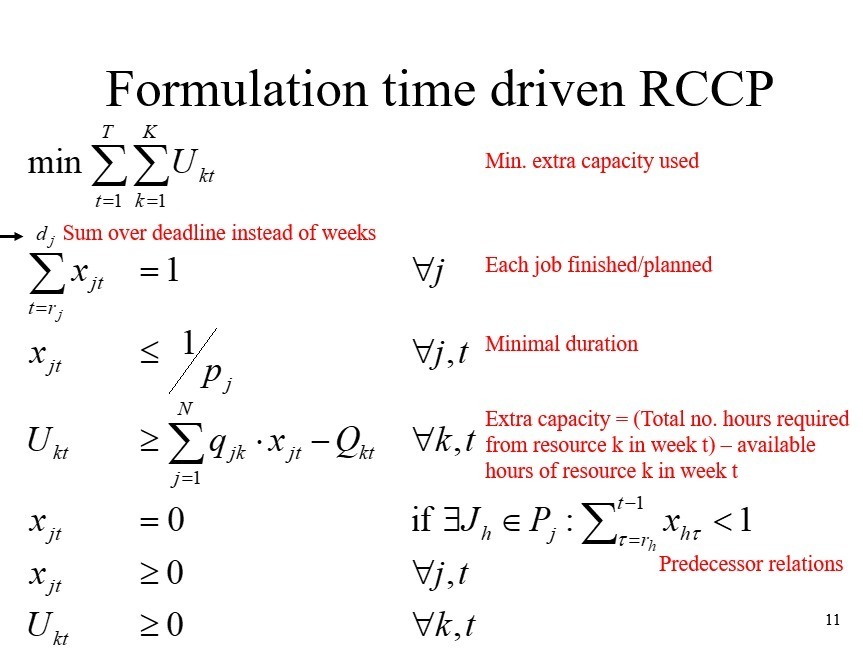@diederik , building on @gdiepen ‘s response, your constraint could look something like
constraint_1,
index domain: j
Definition: sum[t | t>= r(j) and t <= d(j), x(j, t) = 1]
Ultimately, it depends on how you declared the set T (is it a calendar of dates or weeks, or just a plain set of time periods {1, 2, … 5} ) and how the data for r(j) and d(j) is available - is it in same format of Set T or different ?
For example, if r(j) and d(j) are in dates but Set T is a calendar of weeks, then you will need helper functions as below. I suggest you also create a calendar of dates with the same format as r(j) and s(j), and declare these two as element parameters in this calendar.
sum[t | t >= Timeslotcharacteristic(r(j), ‘week’) and t <= Timeslotcharacteristic(d(j), ‘week’)), x(j, t) = 1]
TimeSlotCharacteristic — AIMMS Function Reference




